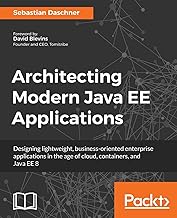Architecting Modern Java EE Applications: A Comprehensive Guide
Introduction
Java EE, now known as Jakarta EE, remains a powerful platform for building enterprise applications. This white paper explores modern architectural patterns and best practices for designing and developing robust, scalable, and maintainable Java EE applications.
Core Concepts
- Java EE Architecture:
- Understanding the layered architecture of Java EE.
- Key components: EJB, JPA, JSF, JMS, and more.
- Dependency Injection:
- Using frameworks like CDI to manage dependencies and promote loose coupling.
- Benefits of dependency injection for modularity and testability.
- Enterprise JavaBeans (EJB):
- Session beans for business logic.
- Message-driven beans for asynchronous processing.
- Stateless, stateful, and singleton beans.
- Java Persistence API (JPA):
- Object-relational mapping (ORM) for data persistence.
- Using JPA to interact with databases.
- JavaServer Faces (JSF):
- Building user interfaces with a component-based approach.
- State management and event handling.
- Java Messaging Service (JMS):
- Asynchronous communication between applications.
- Message producers and consumers.
- RESTful Web Services:
- Designing and implementing RESTful APIs.
- Using JAX-RS for building RESTful web services.
Modern Architectural Patterns
- Microservices Architecture:
- Breaking down applications into small, independent services.
- Benefits of microservices: scalability, flexibility, and fault tolerance.
- Event-Driven Architecture:
- Designing systems that react to events.
- Using message brokers like Apache Kafka for event-driven communication.
- Serverless Architecture:
- Building applications without managing servers.
- Leveraging serverless functions (e.g., AWS Lambda, Azure Functions).
Best Practices
- Security:
- Implementing security measures like authentication, authorization, and encryption.
- Protecting against common vulnerabilities like SQL injection and cross-site scripting (XSS).
- Performance Optimization:
- Profiling and tuning applications for optimal performance.
- Using caching, connection pooling, and asynchronous programming.
- Testing:
- Unit testing, integration testing, and system testing.
- Test-driven development (TDD) and behavior-driven development (BDD).
- Continuous Integration and Continuous Delivery (CI/CD):
- Automating the build, test, and deployment process.
- Using tools like Jenkins and Maven.
- Cloud-Native Development:
- Designing applications for cloud environments.
- Leveraging cloud-native services and platforms.
References
- Java EE 8 Tutorial: Oracle's official tutorial for Java EE 8.
- Pro Java EE 8 Web Services by R. Ramanujam
- Mastering Enterprise JavaBeans by Bill Burke
- The Java Persistence with Hibernate by Christian Bauer and Gavin King
- JavaServer Faces in Action by Kito D. Mann
- Microservices Architecture by Chris Richardson
Conclusion
By following these architectural principles and best practices, you can build robust, scalable, and maintainable Java EE applications. As the technology landscape continues to evolve, staying up-to-date with the latest trends and best practices is essential for successful Java EE development.



